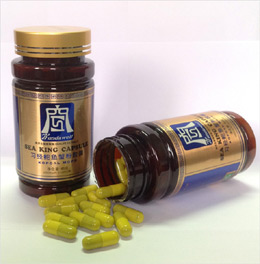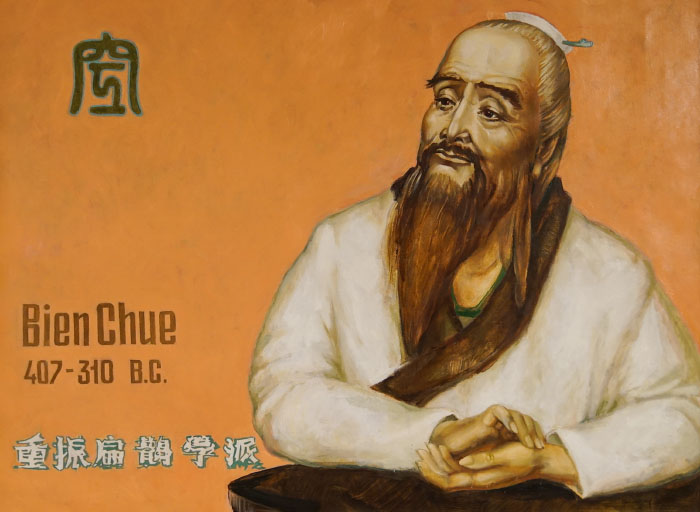
Bien Chue (Bian Que 407-310 BC) is an ancient Chinese doctor who possessed high moral qualities, which people called a wonderful doctor. He founded four methods of diagnosis: inspection, listening, and research of smells, questioning, and palpation. Prepared a theoretical and practical basis for clinical diagnosis and treatment in Chinese medicine. He treated diseases of internal organs, was engaged in surgery, gynecology, pediatrics, Otorhinolaryngology. In clinical practice, he used acupuncture with stones and needles, massage, herbal decoctions, heating pads and other methods for treatment.
Traveling in China, he treated the common people. In ancient books, there are records that the doctor had 10 students. He is the first in the history of ancient China who founded his medical school.
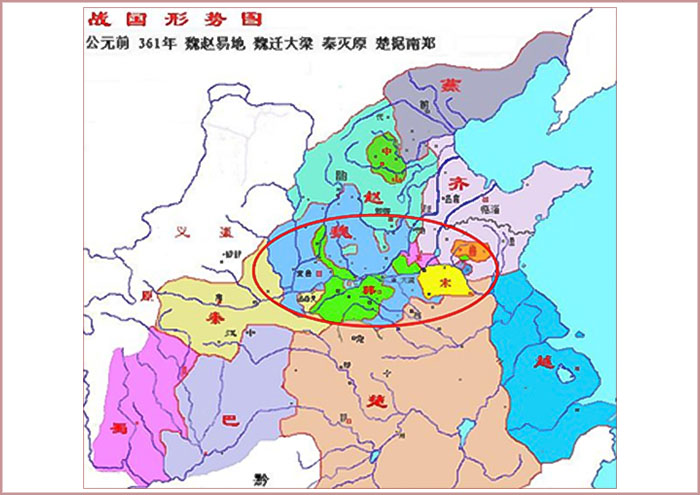
After the death of Bien Chue, people still remember him and admire the results of his work. To this day, places, where he came to live in the provinces of Hebei, Henan, Shandong and other places, have remained named after him: "Bien Chue's hometown", "Bien Chue’s village", "Bien Chue’s monument", " Temple of Bien Chue ", etc. He was set the monuments, open museums after him. About the life of Bien Chue, a movie was filmed.
Nowadays, if a doctor is truly adept, he is often called the Bien Chue of our times.
Professor Xu Mingtang is the successor of the Bien Chue School. Having inherited the knowledge of the school, he founded the Chinese Image Medicine (Image Medicine), making a major contribution to the development of health care both in China and abroad.
Dr. Bien Chue mentioned in Fiction
At the end of the Warring States Period (281-233 BC), a well-known official Han Fei describes in his work the story of how Bien Chue served Qi Heng Gong emperor at the court. Seeing the emperor, Bien Chue told him that he had health problems. The disease has not gone deep yet, but if it is not treated, it will progress. But the emperor did not believe him.
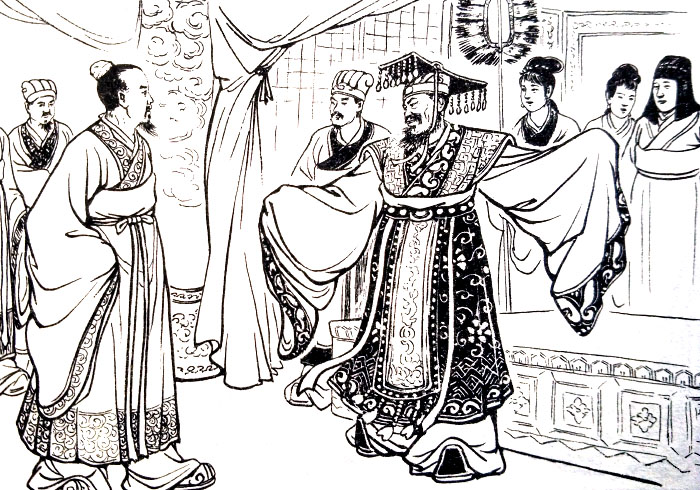
Bien Chue saw Emperor Qi and told him that he was ill, but the emperor did not believe him
A few days later, Bien Chue again saw Emperor Qi and said that his illness had already damaged blood vessels, and if it was not treated, it would be bad for him. The emperor again did not believe the doctor and refused his services. A little more time passed, Bien Chue again saw the emperor and told him that his illness had already hit the stomach and intestines, and if not treated, it would be life-threatening. The emperor became angry and waved his hand so that Bien Chue would get out of the way.
Five days later, upon seeing the emperor, Bien Chue hastily withdrew. Emperor Qi was very surprised at his behavior and sent a servant to find out what was wrong. What the doctor said that the disease has already struck the bone marrow and he can not help. A few days later the emperor suddenly fell down and died. This story once again proves the diagnosis skill of Dr. Bien Chue.
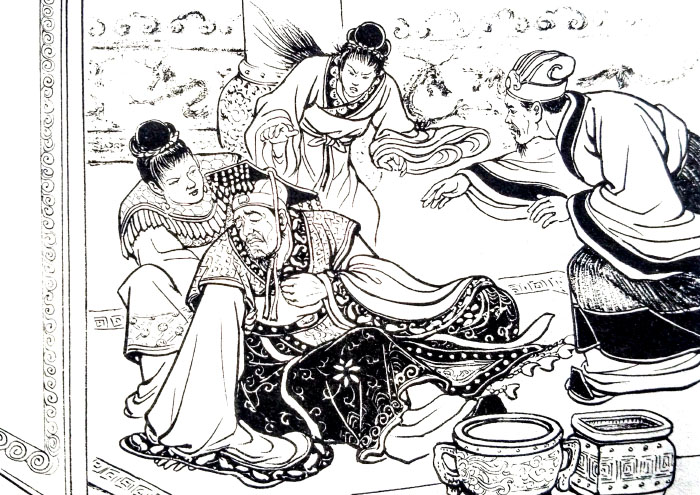
A few days later, the emperor suddenly collapsed and died
The great historian Si Ma Qian (145-90 BC), who lived during the time of the Western Han dynasty, wrote this story about a doctor in the Historical Notes.
When Bien Chue passed through the kingdom of Guo, he saw that everyone there was sad and was preparing for a big funeral ceremony. Locals told him that their princess was not breathing for half a day and everyone was getting ready to say goodbye to her. The doctor went to the palace, diagnosing the princess on the pulse, found that the princess was alive. Under his leadership, two students held a princess acupuncture session and did a warming up. Princess woke up. After the second treatment session, she fully recovered.
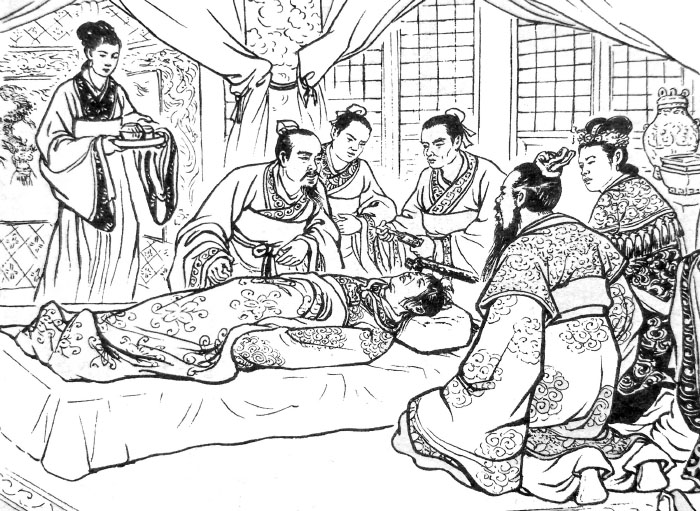
Bien Chue revives princess using acupuncture
Historical study of the Bien Chue school
The influence of Dr. Bien Chue’s school in ancient ChinaProfessor Lee Botson from the Chinese Academy of Sciences wrote a scientific paper entitled "Research by Bien Chue and his school." After conducting research, he proved that the school of Dr. Bien Chue was indeed the very first medical course in the history of ancient Chinese medicine that emerged during the Warring States period. And it had the greatest influence and the best reputation at that time.
During this period, other medical schools began to develop and their followers exchanged experiences with each other. There were medical canons and recipes belonging to the Bien Chue school. Chinese history mentions doctors who were followers of this ancient school.
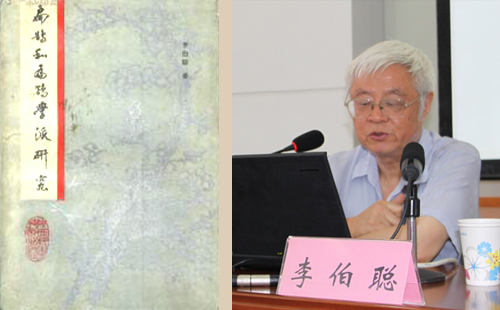
Professor Li Bocong
In the "Medicine and Philosophy" magazine Professor Li Bocong published an article entitled: "Dr. Bien Chue, his school and several questions about the history of TCM."
The article says that many written sources and archaeological finds prove that:
- in the period of the Warring States, the Qin and Han dynasties in society, the works of the Bien Chue School were the most popular;
- during the Han dynasty (202 BC - 220 AD), public opinion considered Bien Chue an omniscient doctor;
- during the Han Dynasty, the number of doctors in Bien Chue’s school was higher than in other schools;
- in the period of the Warring States, the Qin and Han dynasties, a large number of legends about the doctor circulated among the people.
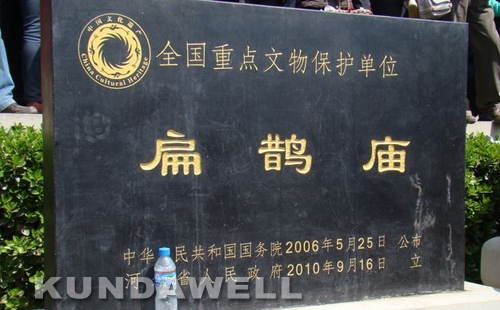
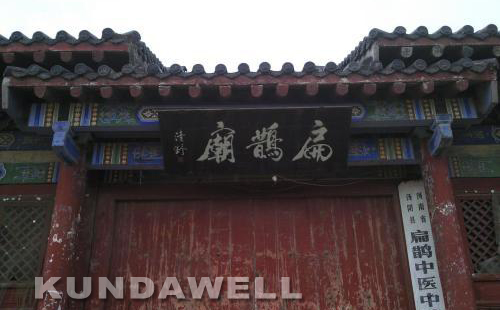
China, He Bei Province, Bien Chue Temple, 1268
The study of written sources of the Dr. Bien Chue school
Dr. Bien Chue was the founder of his school. And he is credited with the authorship of many of the medical works of the Bien Chue school. The “Canon of the Bright Hall Bien Chue” of the Qin Dynasty (221-206 BC) is an ancient work on the correct location of acupuncture points. In the work of the Han dynasty "Art and literature" (206 BC - 23 AD) there are records about the existence of the canons of this school: "Canon about the inner by Bien Chue " and "Canon about the outer by Bien Chue ", and a treatise on acupuncture -" Recipes points by Bien Chue. "
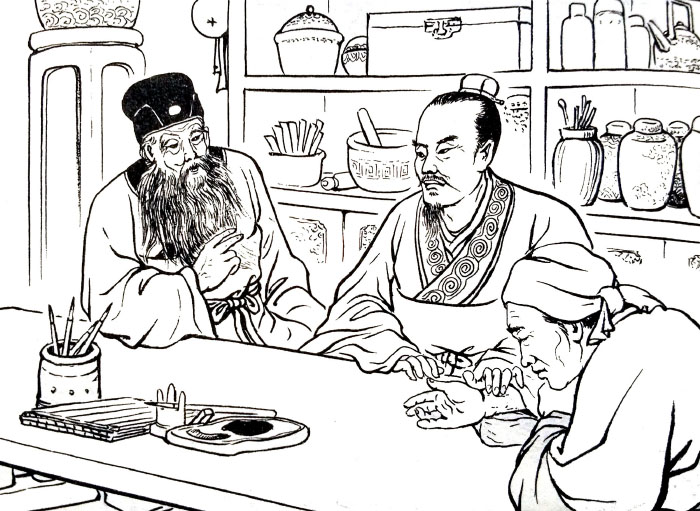
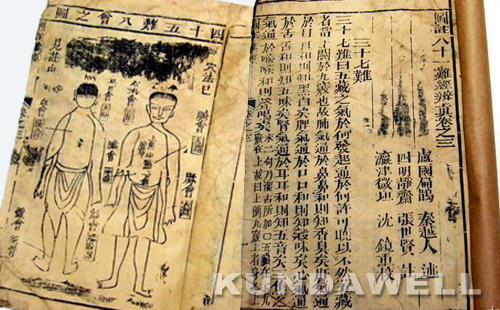
During the reign of the Eastern Han Dynasty (AD 25-220), the followers of the Bien Chue School wrote “A Treatise on Difficult Issues” - this is one of the 4 main treatises of the TCM
During the Eastern Han Dynasty (25-220 AD), followers of the school wrote a Treatise on Difficult Issues, in which they described the experience and knowledge of this trend, beginning with the Western Han dynasty (202 BC - 9 AD) and brought the Bien Chue School to a new level of development. "Sino-Tibetan canon", "Method of internal reflection", "Mirror canon of Bien Chue" - these are works of the Wei, Jin, Southern and Northern dynasties (220 - 589 AD) belonging to the Bien Chue school. "The Book of the Heart of Bien Chue" is the work of the school during the Song Dynasty (960 -1279 AD).
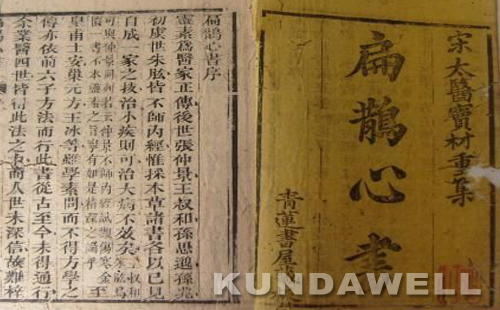
"The Book of the Heart of Bien Chue" - the work of this school of the Song Dynasty (960 -1279 AD)
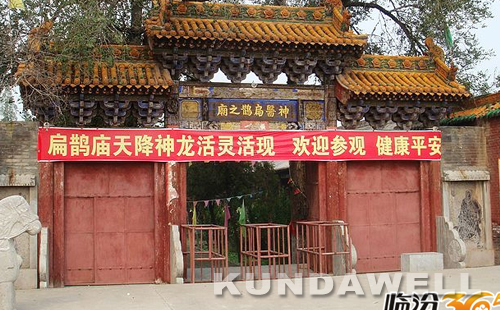
China, Shang Si Province, Bien Chue Temple, 1600
A study about the doctors of Bien Chue School
In the history of China, there were many famous doctors - representatives of the school of Bien Chue
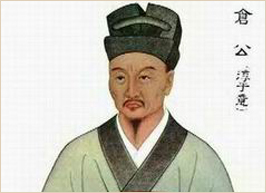 Chun Yuyi and his students were followers of the Bien Chue School during the period of the Western Han dynasty (202 BC - 9 AD).
Chun Yuyi and his students were followers of the Bien Chue School during the period of the Western Han dynasty (202 BC - 9 AD).Chun Yuyi recorded data on all patients and published a "Collection of case histories." In the “Historical Notes” there are references to the followers of the Bien Chue school: “The medical theory and treatment methods of Bien Chue were systemic and effective. Gong (Chun Yui) ".
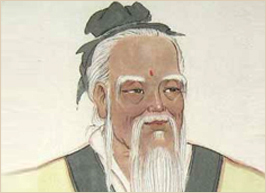 Fu Wen, Cheng Gao, Guo Yu - doctors of the Bien Chue School of Eastern Han Dynasty (25 - 220 AD).
Fu Wen, Cheng Gao, Guo Yu - doctors of the Bien Chue School of Eastern Han Dynasty (25 - 220 AD).One of the books describes the story: “Once upon a time there was an old man who loved fishing on the bank of the river. Fu Weng called him, but no one knew his name, so he was nicknamed Pei Weng (Pei is the name of the river, Weng is an old man). He was a folk healer, knew how to skillfully put needles and heal. He wrote two books: "Canon of acupuncture" and "Method of pulse diagnosis."
Cheng Gao was a student of Fu Weng. The Book of the Last Han describes how Cheng Gao was in search for several years until Fu Weng received him. Gao did not want to be famous, did not want to be an official, he was just a people's doctor.
Guo Yu was a student of Cheng Gao. The "Book of the Last Han" describes that Guo Yu, in his youth, studied medicine and Taoist practices from Chen Gao in the years 80-105. ne and was Minister of Health. He achieved excellent results in treatment.
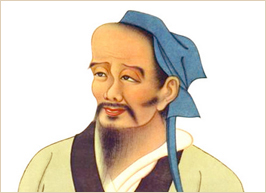 Hua Tuo and his students Wu Pu, Fan E, and Li Dan were doctors followers of the Bien Chue School. Hua Tuo is the author of the Sino-Tibetan Canon. He first began to use painkillers during surgical operations, and also invented a wellness complex "Games of five animals." A "Pharmacopoeia of Wu Jin" and "Pharmacopoeia of Li Dan" are the works of Bien Chue's followers on medicinal herbs.
Hua Tuo and his students Wu Pu, Fan E, and Li Dan were doctors followers of the Bien Chue School. Hua Tuo is the author of the Sino-Tibetan Canon. He first began to use painkillers during surgical operations, and also invented a wellness complex "Games of five animals." A "Pharmacopoeia of Wu Jin" and "Pharmacopoeia of Li Dan" are the works of Bien Chue's followers on medicinal herbs.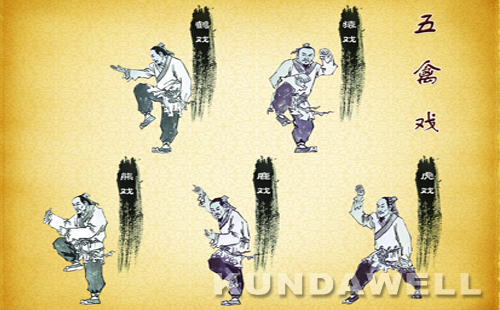
The exercise complex "Games of five animals"
There are many famous and successful scientists in the history of medicine, among them, there are a lot of doctors from the people. In the history of traditional Chinese medicine, the most fruitful in terms of the number of doctors and the number of written works was the period of the Northern and Southern Dynasties (420-589). From the seven generations of the Xu family, twelve famous doctors have come out. Among them, Xu Daodu, Xu Wenbo, Xu Chenbo, Xu Jicai, Xu Jifan. They served in the imperial palace, studied at the imperial medical faculty and enjoyed the great respect of the emperor.
The first doctor in the Xu family was Xu Xi, who loved the art of Lao Tzu, the Yellow Emperor, and solitude in the mountains. Once a Taoist monk passed by his house and asked him for a drink of water. And in gratitude for the water, he left him a pumpkin and said: "Let your children use what is in this pumpkin to save other people and this will be a worthy reward for you." Xu Xi opened the pumpkin and found in it the “Mirror Canon Bien Chue”. Since then, he devoted himself to the study of medicine and at the end of his life became a famous doctor.
Beginning with the Tang Dynasty (618-907), there are fewer representatives of the Bien Chue School. In the period of the Jin Dynasty (960-1279), there is another historical turning point in medicine and the development of this school is again observed. For example, the respected doctor Xu Xi specialized in the treatment of diseases with acupuncture. He treated the emperor and received gifts from him for his treatment. For his ability to bring health to people, he thanked his teacher Bien Chue and prayed for him.
During the Song Dynasty period during the reign of the emperors Shen Zon and Je Zon (1068 - 1100), the chronicle “The History of Song, Biography of Pan An” is described as a famous doctor Pap An says about the school: “If you compare the works of the Yellow Emperor and Bien Chue, then we can say that Dr. Bien Chue possessed the most profound knowledge throughout the world."
Dou Tsai was born in a family of doctors during the Southern Song Dynasty (1127 -1279) and studied with traditional healers. Based on this knowledge and his 40 years of experience, he wrote the book “The Book of the Heart of Bien Chue” (1146 AD).
Over time, the activity of the followers of the school of Bien Chue becomes less and less noticeable, and the followers themselves are lost among the people. They become mentors for a narrow circle of students, pass on knowledge to their sons by inheritance, or took them to the grave.
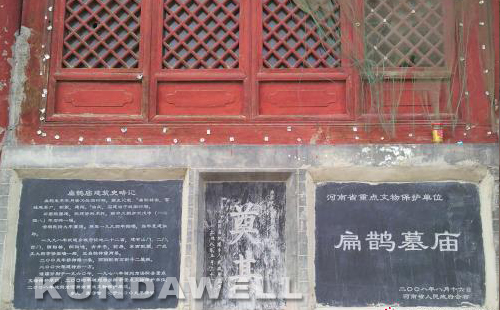
Modern Studies of Bien Chue School
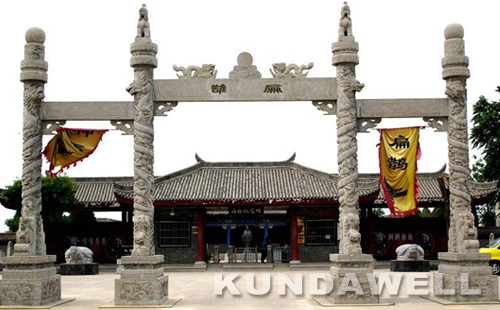
China, Shen Xi Province, Bien Chue Memorial, 1983
"The method of internal reflection" and "Mirror Canon by Bien Chue"
Modern scientist and professor Peng Jinshan after researching the book "The method of internal reflection" wrote that four methods of diagnosis: examination, listening and research of smells, questioning and palpation, can be a matter of life and death. The diagnostic method is called the “Internal Reflection Method”, with this help you can see the internal organs, their condition and learn everything about the disease as if in a mirror.
Xu Mingtang and Chinese Image Medicine
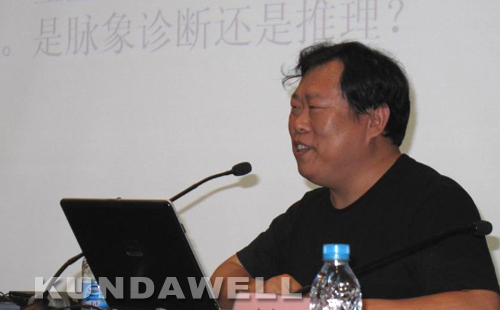
Professor Xu Mingtang
Professor Xu Mingtang is the current successor to the Bien Chue School, a scholar and teacher. He inherited the knowledge of the school and founded the Chinese Image Medicine - an independent system of diagnosis and treatment of diseases according to the traditions of the Bien Chue school. The Chinese Image Medicine is based on figurative thinking, takes three factors during treatment into account: Jing (matter) Qi (energy) and Shen (information), uses images for diagnostics and changes images during treatment.
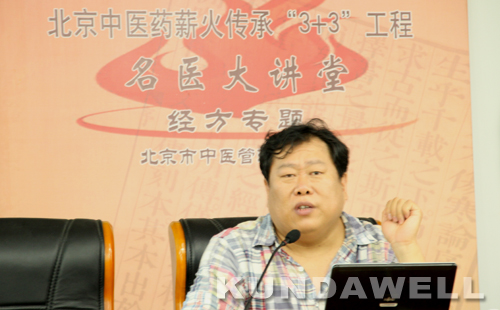
Professor Xu Mingtang gives a lecture at Beijing University of Chinese Medicine
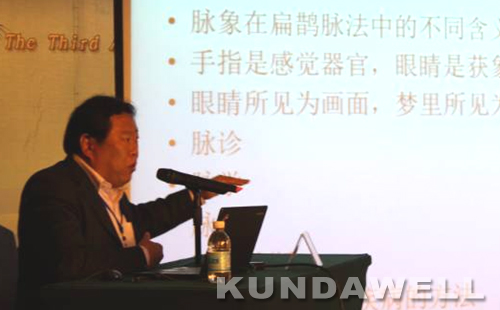
Professor Xu Mingtang made a presentation at the conference on pulse diagnosis
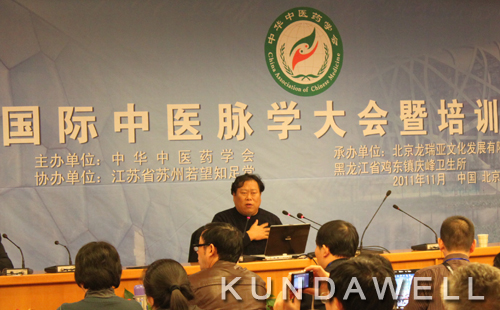
Professor Xu Mingtang at the International Conference on Pulse Diagnostics
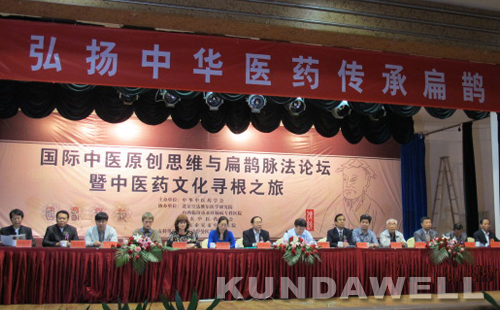
International Conference on Imagе Thinking and Pulse Diagnostics of Dr. Bien Chue
Pulse diagnosis of Bien Chue
Professor Xu Mingtang, for the first time, summarized the knowledge of the pulse diagnosis of this school and spoke about three levels of pulse diagnosis: pulse beating, pulse energy and pulse image.
The pulse image is the highest level of diagnosis. Through pulse diagnosis, it is possible to directly obtain information and an image about the state of health, to determine the location and nature of the disease. To do this, at the beginning of a pulse diagnosis session, the doctor with fingertips probes the patient's pulse. The feelings under the fingers of the doctor are transformed into images of the location and nature of the disease. With the help of the image, you can see the psychological, physical and emotional state of a person.
Bien Chue School Value
Professor Xu Mingtang continues to share the ancient forgotten knowledge with the world, and thus returns to the ancient flow of Chinese medicine - Bien Chue school former glory. He helped to overcome intractable diseases to a large number of people. Currently engaged in research work at the Institute "Kundawell" in Beijing.
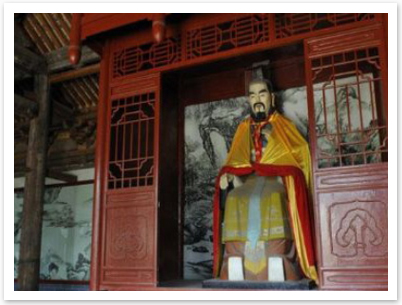
Temple of Dr. Bien Chue
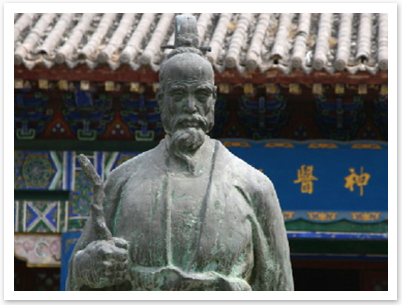
Monument to Dr. Bien Chue
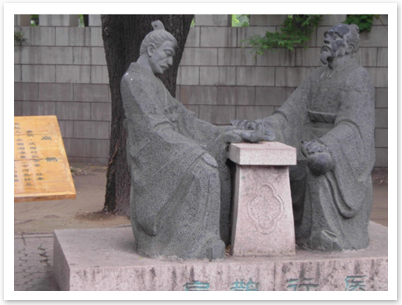
Bien Chue conducts a pulse diagnosis session
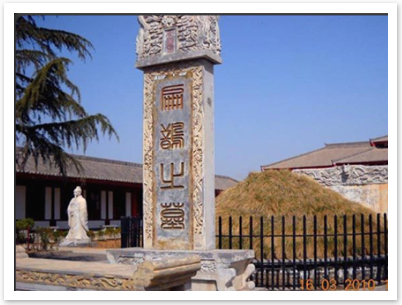
Grave of Bien Chue (Shen Xi)
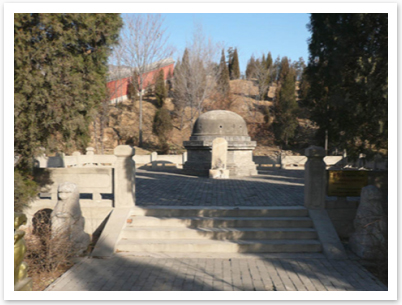
Grave of Bien Chue (Shen Xi)
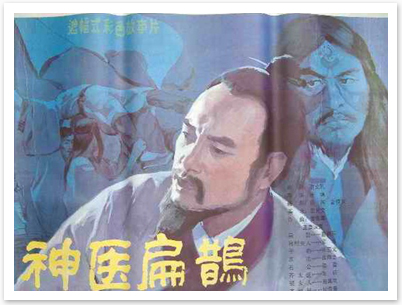
The film "Wonderful Dr. Bien Chue", 1985
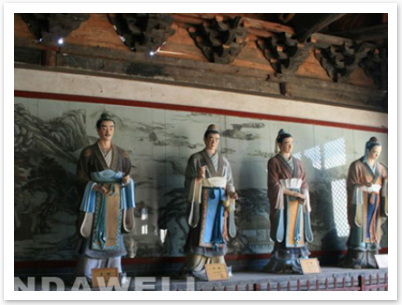
Ten students of Bien Chue, part one
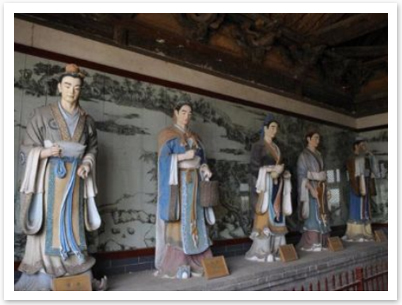
Ten students of Bien Chue, part two
The author of the article is Dr. Li Jun
Candidate of Medical Sciences
Certified Doctor of TCM
Researcher of Chinese Image Medicine methods






